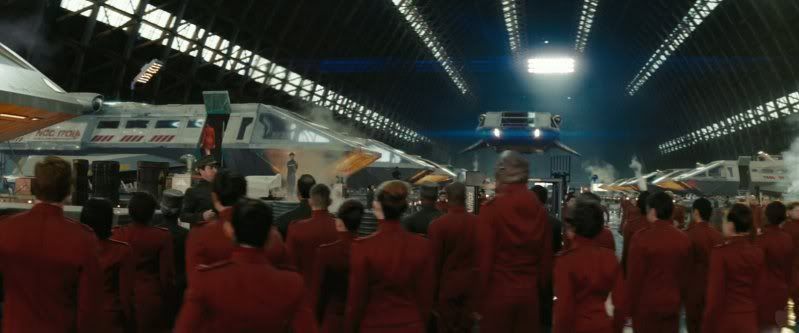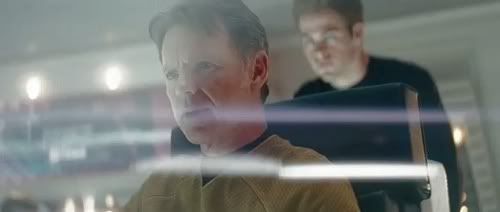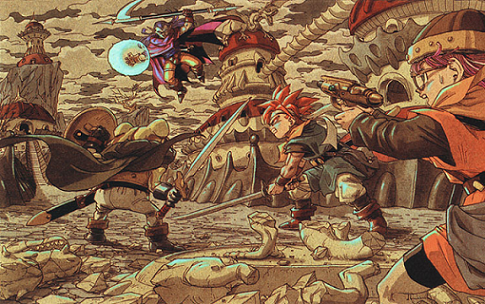
Since Star Trek has hit the screens I have been hearing common jokes about the prominence of lens flares in the film. I have never been a Trekkie, always leaning closer to the Star Wars universe, to the extent that J.J. Abrams’ film is the first Star Trek experience I’ve ever had. In short, I am here to defend the lens flare.
Wikipedia describes the lens flare as “light scattered in lens systems through generally unwanted image formation mechanisms, such as internal reflection and scattering from material inhomogeneities in the lens.” In other words, it is light that gets bounced and reflected within the lenses of a camera. When used intentionally, it often creates an epic and dramatic effect.In an interview, Abrams describes his deliberate exploitation of the lens flare effect, suggesting that “just off camera, something spectacular is happening…There are something about those flares, especially in a movie that can potentially be very sterile and CG and overly controlled. There is something incredibly unpredictable and gorgeous about them.” Many of these flares were created with out digital assistance by off-screen flashlights and mirrors which Abrams insists creates the sense of action uncontainable by a cinematic frame.
To me, what the lens flare really does is call attention to the presence of the camera itself. By acknowledging the technical presence of the camera, the film grounds itself as something real and something filmable. This is important for a film like Star Trek, which as Abrams points out, had the potential to become an oversaturated CGI effects extravaganza (Wolverine anyone?) In this sense the lens flare brings a sense of reality to the table. This reality makes the action more identifiable and immediate to the audience.

I would also like to draw attention to a similar technique used in the film to the same effect: the shotgun zoom. This technique involves the manual operation of the zoom lens allowing for a rapid zoom on a subject, often seen in Bruce Lee films [skip to 0:19] (and really, most cheesy films and shows from the 60s and 70s…Star Trek included.) This technique once again draws attention to the existence of the camera as the recorder of events in a cinema verité sort of fashion.
The first time I saw this technique used to this effect in a modern sci-fi was in the Battle of Geonosis scene in Attack of the Clones (skip to 6:30). When I saw this however, I was very jarred. I assume it is because, unlike the new Star Trek, the Star Wars prequels rarely acknowledge the presence of a camera in this grounding way.
This only reminds me of last summer’s Wall-E, which also grounded action through the incorporation of camera aesthetics.

Being entirely computer-generated, it is interesting how Wall-E incorporated these aesthetics to create the impression of cinematic realism. During production, the producers of Wall-E invited acclaimed cinematographer Roger Deakins to Pixar Studios to advise programmers on camera aesthetics, and the visual effects of various lenses and lighting styles. Programmers simulated techniques such as the shotgun zoom and shallow lens focus in an attempt to create a more documentary feel, the same way mockumentary TV shows like The Office attempt to.
It is also worth noting the importance of Ben Burtt’s distinct sci-fi sound design in Wall-E, and Star Trek.

Burtt’s work is probably best known from Star Wars in which he revolutionized sci-fi sound design, opting for very worldly sounds instead of the traditional synthesized sci-fi soundtrack. This approach re-emerges in his work for both Wall-E and Star Trek. The importance of this approach to sound, in similar ways as the aforementioned cinematography, is to ground film visuals into a real-world environment. This has special importance in (CGI) effects-driven films like Wall-E and Star Trek in that much of the film world has no diegetic anchor to the real world in that it is constructed digitally.
These approaches to cinematography and sound may seem minor, however I think this may be a new trend in CGI-heavy movies. When CGI was relatively new, we often saw filmmakers over-indulging in its near-endless possibilities. One shot comes to mind in Return of the King, when the camera pulls away from Gollum’s face (skip to 2:15), through the actual loop of the One Ring, into a wide-angle shot of the innards of Mount Doom. Such impossible camera movement can be disturbing to audiences who know that such a camera movement is impossible, thus drawing attention to the falsity of the special effects in play. Filmmakers are now tending to return to the laws and limitations of the real world in their virtual cinematography in an attempt for greater realism.
In the science-dependent universe of Star Trek, such a move couldn’t be more important.



